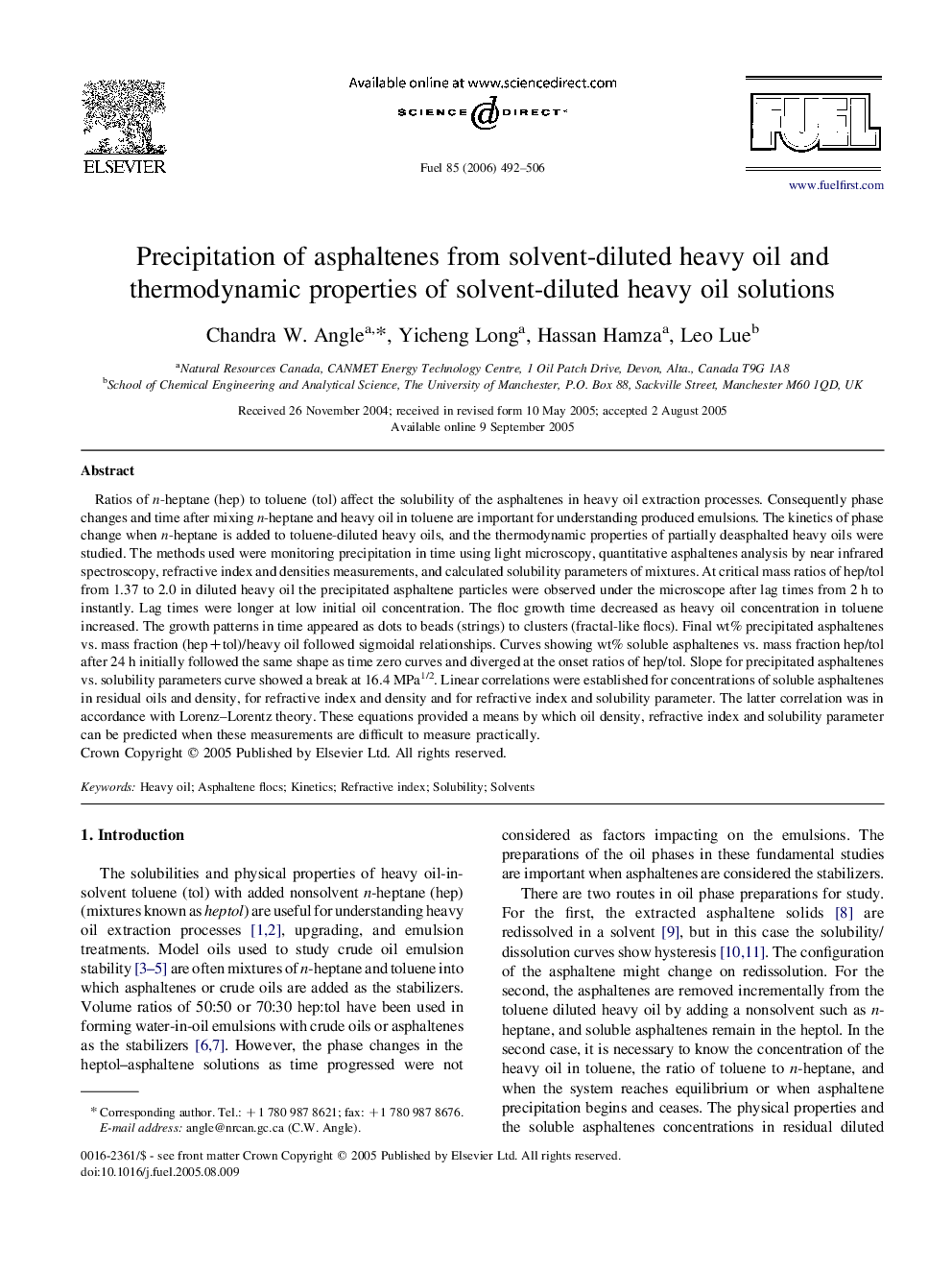| Article ID | Journal | Published Year | Pages | File Type |
|---|---|---|---|---|
| 207961 | Fuel | 2006 | 15 Pages |
Ratios of n-heptane (hep) to toluene (tol) affect the solubility of the asphaltenes in heavy oil extraction processes. Consequently phase changes and time after mixing n-heptane and heavy oil in toluene are important for understanding produced emulsions. The kinetics of phase change when n-heptane is added to toluene-diluted heavy oils, and the thermodynamic properties of partially deasphalted heavy oils were studied. The methods used were monitoring precipitation in time using light microscopy, quantitative asphaltenes analysis by near infrared spectroscopy, refractive index and densities measurements, and calculated solubility parameters of mixtures. At critical mass ratios of hep/tol from 1.37 to 2.0 in diluted heavy oil the precipitated asphaltene particles were observed under the microscope after lag times from 2 h to instantly. Lag times were longer at low initial oil concentration. The floc growth time decreased as heavy oil concentration in toluene increased. The growth patterns in time appeared as dots to beads (strings) to clusters (fractal-like flocs). Final wt% precipitated asphaltenes vs. mass fraction (hep+tol)/heavy oil followed sigmoidal relationships. Curves showing wt% soluble asphaltenes vs. mass fraction hep/tol after 24 h initially followed the same shape as time zero curves and diverged at the onset ratios of hep/tol. Slope for precipitated asphaltenes vs. solubility parameters curve showed a break at 16.4 MPa1/2. Linear correlations were established for concentrations of soluble asphaltenes in residual oils and density, for refractive index and density and for refractive index and solubility parameter. The latter correlation was in accordance with Lorenz–Lorentz theory. These equations provided a means by which oil density, refractive index and solubility parameter can be predicted when these measurements are difficult to measure practically.
